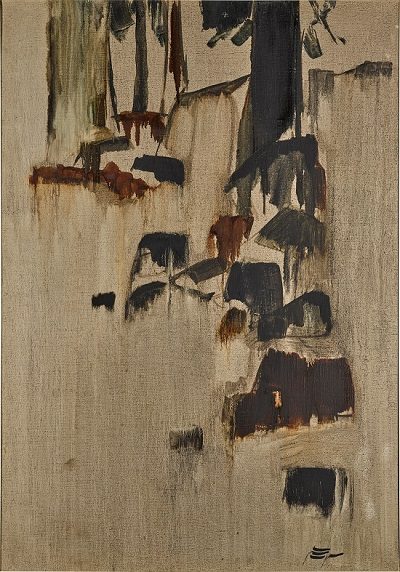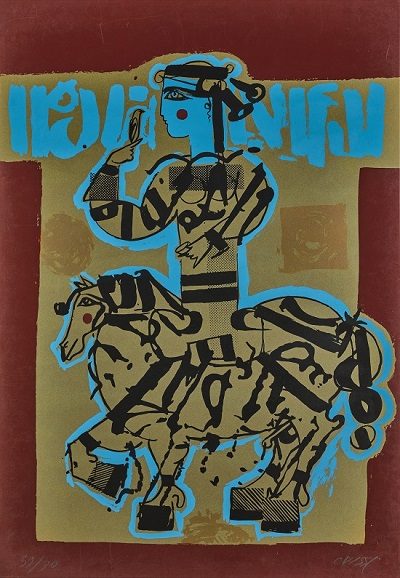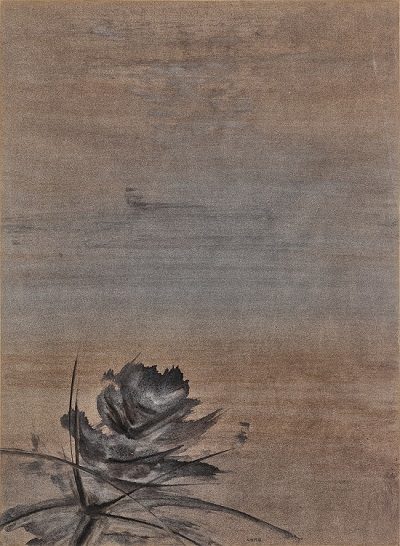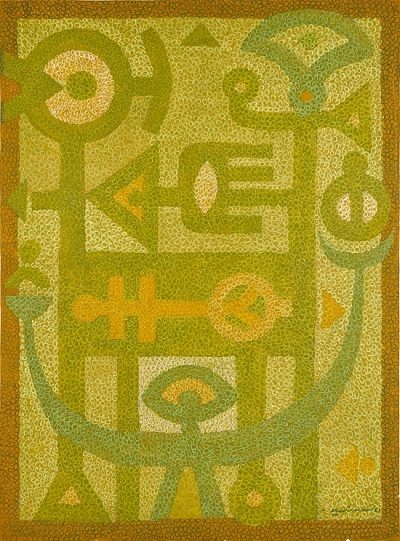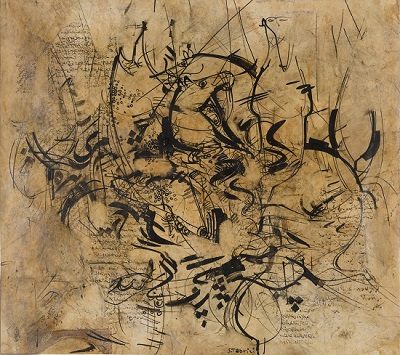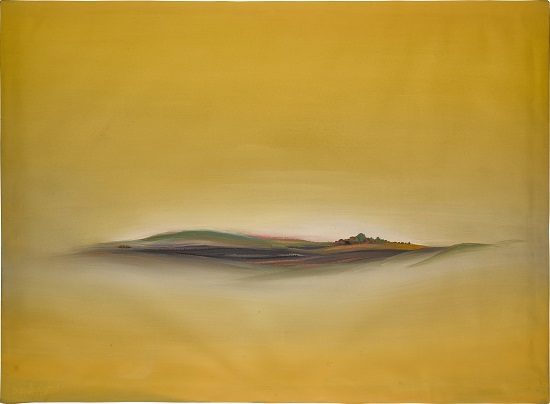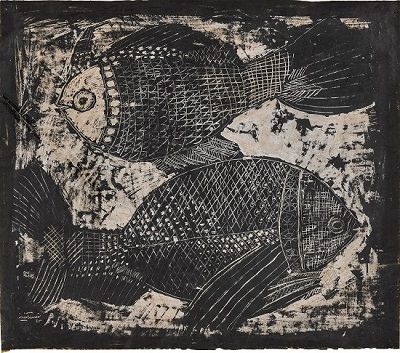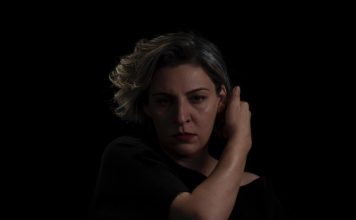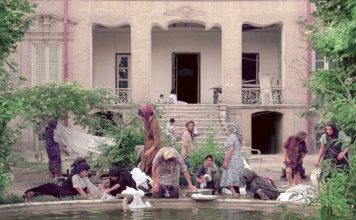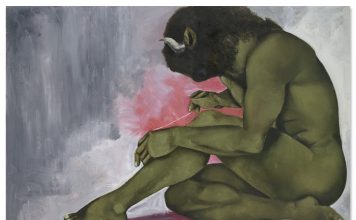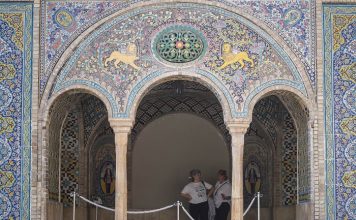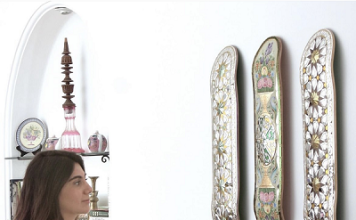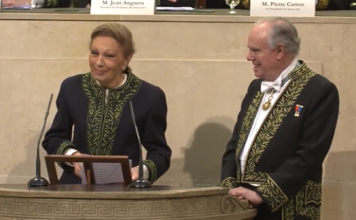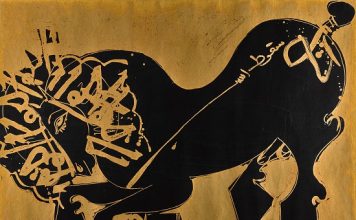By Nazanine Nouri
A painting by Bahman Mohasses, the prominent Iranian artist known as the ‘Persian Picasso,’ sold for 304,800 pounds ($380,000) in the bi-annual Sotheby’s Modern & Contemporary Middle East sale, which was held online and closed on April 25.
“(Untitled) Fifi with Guitar” (1964) was one of two by Mohasses to be included in the sale. The other, “(Untitled) Fifi” (1964) fetched 152,400 pounds ($190,000).
The highest-selling works in the auction, they were from the Shireen and Reza Khazeni collection, which also included works by Mansour Ghandriz, Sohrab Sepehri, Nasser Assar, Sadegh Tabrizi, Gholamhossein Nami, Mir Abdolreza Daryabeigi, Nasser Assar, Jazeh Tabatabai, and Nasser Ovissi.
Khazeni acquired the two Mohasses paintings directly from the artist in 1967.
Also sold in the Sotheby’s auction was Ghandriz’s “Untitled” (1962). It was acquired for 101,600 pounds (about $130,00) by the Iranian-born collector and patron Mohammed Afkhami, one of a number of purchases by Afkhami, Sotheby’s said.
In addition, the Sotheby’s sale included three photographs by Abbas Kiarostami from the Zelda Cheatle Gallery in London, works by Reza Derakshani and Havy Kahraman from private collections in Dubai, and a work by Sadegh Tirafkan from a private collection in New York.
Mohasses’s two works, (Untitled) “Fifi” and (Untitled) “Fifi with Guitar” show a faceless, fictitious female character, Fifi, who appears repeatedly in Mohasses’s works. The artist is best known for depicting such anthropomorphic, androgynous figures, which are often paralleled with those of Francis Bacon.
Mohasses once explained that he showed “nothingness” in his works, “with footless, handless, and mouthless figures. Everything which was a pretense of life has been taken” from the figures, he said.
The Khazeni’s started buying art in Tehran’s flourishing creative environment in the 1960s, when they were in their twenties.
Shireen, née Mahdavi, is an avid historian and independent scholar who has written extensively on 19th century Iranian history. She studied in England and was introduced to art while living with a famous English architect couple. Her husband Reza is an Iranian architect who studied in America before returning to his homeland.
One of Reza’s earliest memories after his return was an evening at the Italian Institute, listening to Mohasses give an impressive talk about art. Reza befriended the artist and, following a visit to his studio, acquired the two Mohasses works which sold at Sotheby’s.
When he first saw “Fifi with Guitar,” it was love at first sight.
“When you first look at the painting, you discover such a strong image through which the craftsmanship and artistry was evident,” he said. “Shireen also loved the work when it came home.”
From then on, the couple became close friends with Mohasses who would visit them often, particularly between 1964-1968, the period during which the artist lived permanently in Iran.
Mohasses is regarded as the most prominent Iranian artist of the past century. Born in Rasht, northern Iran, in 1931, he studied at Tehran University’s Faculty of Fine Arts before leaving Iran for Rome after the 1953 overthrow of Prime Minister Mohammad Mossadegh. In Rome, he became one of the very first Iranian students to enroll at the Fine Art Academy where he was exposed to Cubism and Surrealism, and his art soon reflected those influences.
Having returned to his homeland for a few years, the artist settled more or less permanently in Rome from 1968. Living for decades in a hotel, he was a reclusive and mysterious figure, and made a habit of destroying his paintings and sculptures.
On a trip to Tehran in 2006, he destroyed many of the works still remaining in his atelier there; other large-scale sculptures that had been commissioned for public squares in Iran in the 1960s were destroyed during the Islamic Revolution. Mohasses died in Rome in 2010.
Attention for all images supplied by Sotheby’s via email, dropbox or wetransfer: Copyright in this image shall remain vested in Sotheby’s. Please note that this image may depict subject matter which is itself protected by separate copyright. Sotheby’s makes no representations as to whether the underlying subject matter is subject to its own copyright, or as to who might hold such copyright. It is the borrower’s responsibility to obtain any relevant permissions from the holder(s) of any applicable copyright and Sotheby’s supplies this image expressly subject to this responsibility. Note that the image is provided for a one- time use only and no permission is granted to alter this image in any way.


